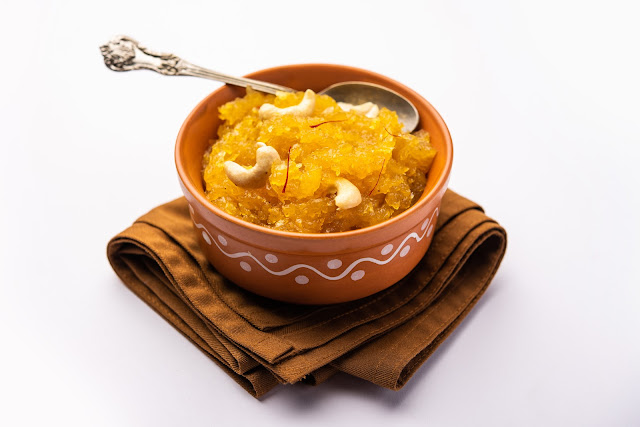The Ultimate Guide to Perfecting Moong Dal Halwa: A Culinary and Cultural Exploration
The Ultimate Guide to Perfecting Moong Dal Halwa: A Culinary and Cultural Exploration
Moong Dal Halwa is much more than just a dessert; it’s a culinary masterpiece that has stood the test of time in Indian cuisine. With its unparalleled richness, melt-in-your-mouth texture, and irresistible aroma, this dessert is a staple during festivals, weddings, and joyous occasions. For students of culinary arts or gastronomy, Moong Dal Halwa represents an exemplary case study of how tradition, technique, and ingredients can come together to create a dish that’s as much about heritage as it is about flavor. This guide delves deeply into the art and science of making Moong Dal Halwa, while also exploring its cultural roots and nutritional aspects.
Why Study Moong Dal Halwa?
Moong Dal Halwa is a quintessential representation of Indian gastronomy’s rich history and innovation. Originating from Rajasthan, this dessert was designed to provide warmth and nourishment during the state’s cold winters. Its core ingredients—ghee, moong dal, milk, and sugar—are simple but transformative when combined through meticulous cooking techniques. For food enthusiasts and professionals, studying this dessert offers insights into the intricate processes that elevate humble ingredients into a luxurious dish.
In Indian culture, Moong Dal Halwa isn’t just food; it’s a tradition. Preparing it is a labor of love that demands patience and skill, making it a favorite for communal celebrations. Its popularity also lies in its adaptability, with modern chefs incorporating unique twists while preserving its essence.
Ingredients: A Closer Look at Their Role
To craft an authentic Moong Dal Halwa, each ingredient must be carefully selected and prepared. Let’s examine their significance:
Yellow Moong Dal (1 cup): Acts as the base, providing a nutty flavor and protein-rich profile.
Ghee (½ cup): Not only enhances flavor but also acts as a medium for roasting and unlocking the dal’s aroma.
Whole Milk (2 cups): Adds creaminess and balances the rich flavors.
Sugar (1 cup): Provides sweetness while helping achieve the glossy texture characteristic of the dish.
Cardamom Powder (½ teaspoon): Offers a warm, aromatic sweetness that complements the richness.
Saffron Strands (a pinch): Imparts a luxurious color and subtle floral notes.
Dry Fruits (as needed): Almonds, cashews, and pistachios contribute crunch and additional layers of flavor.
The Science of Moong Dal Halwa: Step-by-Step Breakdown
Step 1: Preparing the Dal
Rinse the soaked moong dal to remove excess starch.
Grind it into a coarse paste, ensuring a grainy texture that contributes to the dish’s mouthfeel.
Scientific Insight: Grinding the dal coarsely ensures that the roasted particles absorb milk more effectively, creating a creamy yet granular texture.
Step 2: Roasting the Dal
Heat ghee in a heavy-bottomed kadhai to ensure even heat distribution.
Add the ground dal and roast on low heat. Stir continuously to prevent lumps and achieve a golden-brown color.
Why This Matters: Roasting drives the Maillard reaction, a chemical process that enhances flavor through browning. This step is critical for developing the nutty, aromatic profile of the halwa.
Step 3: Incorporating Milk
Gradually pour warm milk into the roasted dal, stirring to prevent splattering.
Allow the mixture to simmer, enabling the dal to absorb the milk fully.
Key Note: The slow absorption of milk ensures even hydration of the dal, preventing clumping and enhancing texture.
Step 4: Sweetening and Flavoring
Mix in sugar, which initially makes the mixture runny but thickens upon cooking.
Add cardamom powder and saffron-infused milk for depth and aroma.
Step 5: Finishing Touches
Incorporate dry fruits and cook until the halwa achieves a glossy, semi-solid consistency. Serve warm.
Cultural Context: Moong Dal Halwa in Indian Society
Moong Dal Halwa has been a part of Indian celebrations for centuries. Historically, its preparation was considered an act of devotion, with families spending hours perfecting the dish. Today, it continues to symbolize abundance and joy, often served at weddings and festivals like Diwali and Holi.
Case Study: In Rajasthan, halwa preparation often involves communal cooking, with families gathering to share recipes and techniques. This not only ensures authenticity but also strengthens familial bonds—a testament to the cultural significance of food in Indian society.
Variations: Modern Twists on a Classic
For culinary students, experimenting with traditional dishes like Moong Dal Halwa offers endless opportunities for creativity. Here are some innovative adaptations:
Jaggery Halwa: Substitute sugar with jaggery for a caramelized sweetness and added minerals.
Vegan Halwa: Use almond or coconut milk and vegan butter to cater to plant-based diets.
Fusion Desserts: Incorporate the halwa as a filling for pastries or serve it with ice cream for a contemporary touch.
Nutritional Analysis
Moong Dal Halwa is a calorie-dense dessert, but its nutritional benefits can’t be overlooked:
Protein: Derived from moong dal, making it suitable for vegetarians.
Healthy Fats: Provided by ghee, which aids in the absorption of fat-soluble vitamins.
Micronutrients: Dry fruits contribute antioxidants, vitamins, and minerals.
Suggestion: Create a pie chart breaking down the macronutrient composition of Moong Dal Halwa.
Key Takeaways for Aspiring Chefs
Master Roasting: Perfect the art of roasting to achieve the hallmark nutty flavor.
Balance Flavors: Maintain harmony between sweetness and richness.
Experiment: Use this dish as a base to explore creative culinary concepts.
Conclusion: The Art of Culinary Storytelling
Moong Dal Halwa is not merely a recipe; it’s a narrative of tradition, innovation, and emotion. For culinary students, mastering this dessert is an opportunity to connect with Indian heritage while honing essential skills like roasting, balancing flavors, and plating. Whether served traditionally or reimagined with a modern twist, Moong Dal Halwa continues to captivate palates and hearts alike. Dive into this journey, and let the art of cooking this timeless dessert enrich your culinary repertoire.





